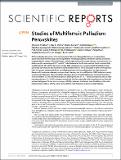Files in this item
Studies of multiferroic palladium perovskites
Item metadata
| dc.contributor.author | Pradhan, Dhiren K. | |
| dc.contributor.author | Mishra, Ajay K. | |
| dc.contributor.author | Kumari, Shalini | |
| dc.contributor.author | Basu, Abhisek | |
| dc.contributor.author | Somayazulu, Maddury | |
| dc.contributor.author | Gradauskaite, Elzbieta | |
| dc.contributor.author | Smith, Rebecca M. | |
| dc.contributor.author | Gardner, Jonathan | |
| dc.contributor.author | Turner, P. W. | |
| dc.contributor.author | N’Diaye, Alpha T. | |
| dc.contributor.author | Holcomb, M. B. | |
| dc.contributor.author | Katiyar, Ram S. | |
| dc.contributor.author | Zhou, Peng | |
| dc.contributor.author | Srinivasan, Gopalan | |
| dc.contributor.author | Gregg, J. M. | |
| dc.contributor.author | Scott, J. F. | |
| dc.date.accessioned | 2019-02-11T17:30:05Z | |
| dc.date.available | 2019-02-11T17:30:05Z | |
| dc.date.issued | 2019-02-08 | |
| dc.identifier | 257703935 | |
| dc.identifier | 98f10e95-b58c-4d04-bea8-2294e1a6d71d | |
| dc.identifier | 85061231665 | |
| dc.identifier | 000458178100017 | |
| dc.identifier.citation | Pradhan , D K , Mishra , A K , Kumari , S , Basu , A , Somayazulu , M , Gradauskaite , E , Smith , R M , Gardner , J , Turner , P W , N’Diaye , A T , Holcomb , M B , Katiyar , R S , Zhou , P , Srinivasan , G , Gregg , J M & Scott , J F 2019 , ' Studies of multiferroic palladium perovskites ' , Scientific Reports , vol. 9 , 1685 . https://doi.org/10.1038/s41598-018-38411-8 | en |
| dc.identifier.issn | 2045-2322 | |
| dc.identifier.other | RIS: urn:E1E4619B34E493F837EF83D995EFE420 | |
| dc.identifier.other | RIS: Pradhan2019 | |
| dc.identifier.other | ORCID: /0000-0002-8862-8315/work/61133155 | |
| dc.identifier.uri | https://hdl.handle.net/10023/17039 | |
| dc.description | Work at St. Andrews supported by EPSRC grant EP/P024637/1; at Queens University Belfast by EPSRC Grant No. EP/J017191/1 and EP/N018389/1, at Univ. Puerto Rico by DoD AFOSR Grant FA9550-16-1-0295 and at West Virginia University by DOE (DE-SC0016176). | en |
| dc.description.abstract | We have studied the atomic force microscopy (AFM), X-ray Bragg reflections, X-ray absorption spectra (XAS) of the Pd L-edge, Scanning electron microscopey (SEM) and Raman spectra, and direct magnetoelectric tensor of Pd-substituted lead titanate and lead zirconate-titanate. A primary aim is to determine the percentage of Pd+4 and Pd+2 substitutional at the Ti-sites (we find that it is almost fully substitutional). The atomic force microscopy data uniquely reveal a surprise: both threefold vertical (polarized out-of-plane) and fourfold in-plane domain vertices. This is discussed in terms of the general rules for Voronoi patterns (Dirichlet tessellations) in two and three dimensions. At high pressures Raman soft modes are observed, as in pure lead titanate, and X-ray diffraction (XRD) indicates a nearly second-order displacive phase transition. However, two or three transitions are involved: First, there are anomalies in c/a ratio and Raman spectra at low pressures (P = 1 − 2 GPa); and second, the c/a ratio reaches unity at ca. P = 10 GPa, where a monoclinic (Mc) but metrically cubic transition occurs from the ambient tetragonal P4 mm structure in pure PbTiO3; whereas the Raman lines (forbidden in the cubic phase) remain until ca. 17 GPa, where a monoclinic-cubic transition is known in lead titanate. | |
| dc.format.extent | 12 | |
| dc.format.extent | 3248994 | |
| dc.language.iso | eng | |
| dc.relation.ispartof | Scientific Reports | en |
| dc.subject | QD Chemistry | en |
| dc.subject | NDAS | en |
| dc.subject.lcc | QD | en |
| dc.title | Studies of multiferroic palladium perovskites | en |
| dc.type | Journal article | en |
| dc.contributor.sponsor | EPSRC | en |
| dc.contributor.institution | University of St Andrews. School of Chemistry | en |
| dc.contributor.institution | University of St Andrews. School of Physics and Astronomy | en |
| dc.contributor.institution | University of St Andrews. Condensed Matter Physics | en |
| dc.identifier.doi | 10.1038/s41598-018-38411-8 | |
| dc.description.status | Peer reviewed | en |
| dc.identifier.grantnumber | EP/P024637/1 | en |
This item appears in the following Collection(s)
Items in the St Andrews Research Repository are protected by copyright, with all rights reserved, unless otherwise indicated.

